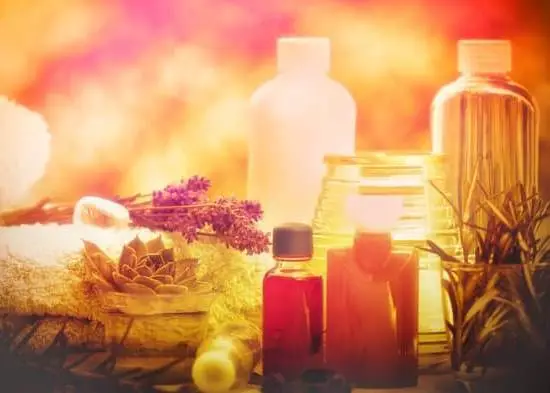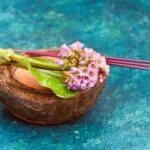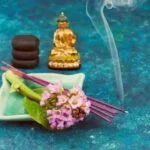In recent years, there has been a significant surge in the use of essential oils and aromatherapy as alternative medicine and self-care practices gain popularity. These natural remedies have captured the attention of individuals seeking holistic healing and improved overall well-being.
Are essential oils and aromatherapy interchangeable terms, or do they have distinct roles in these practices? This article aims to explore the similarities and differences between essential oils and aromatherapy, shedding light on their unique contributions to the field of holistic health.
Essential oils are highly concentrated plant extracts that capture the therapeutic properties of different herbs, flowers, fruits, and other botanicals. They are obtained through a meticulous extraction process that involves distillation or cold-pressing methods. With their potent aromatic compounds, these oils possess a wide range of healing properties that have been utilized for centuries in traditional medicine practices.
On the other hand, aromatherapy is an ancient healing practice that harnesses the power of essential oils to promote physical and psychological well-being. It involves using these oils for various applications such as inhalation, massage therapy, bath rituals, or diffusion techniques to create a soothing ambiance. The inhalation of aromatic molecules stimulates the olfactory system, which influences emotions and triggers physiological responses in the body.
While essential oils are at the core of aromatherapy practices, it is important to understand that they serve distinct purposes within this broader concept. Essential oils alone can be used topically or internally for specific health benefits. Aromatherapy encompasses a wider range of techniques and approaches aimed at creating therapeutic environments through scent diffusion or direct application on the skin.
As we delve deeper into this topic, let us unravel the key differences between essential oils and aromatherapy while exploring their interconnectedness in enhancing holistic healing. By understanding how these two components work together synergistically or independently in improving health outcomes, we can fully grasp their immense potential as transformative tools for self-care and alternative medicine practices.
Understanding Essential Oils
What Exactly Are Essential Oils?
Essential oils have gained considerable popularity in recent years for their numerous health benefits and therapeutic properties. But what exactly are essential oils?
Essential oils are highly concentrated, aromatic compounds derived from various parts of plants such as flowers, leaves, bark, and roots. The extraction process usually involves methods like steam distillation or cold pressing, ensuring that the volatile aromatic compounds are captured in the oil. This concentration makes essential oils potent and powerful, often requiring dilution before use.
The Extraction Process
The extraction process plays a crucial role in determining the quality and potency of essential oils. Steam distillation is the most common method used for extracting essential oils from plant material. It involves passing steam through the plant material to release the volatile compounds, which are then condensed into a liquid form.
Another method is cold pressing, which is primarily used for obtaining essential oils from citrus fruits like oranges and lemons. In this process, the rind of the fruit is mechanically pressed to release its fragrant oil. This technique ensures that no heat or chemicals are involved in the extraction process, preserving the integrity of the oil.
Types of Essential Oils in the Market
Essential oils come in a wide range of varieties, each with its own unique properties and uses. Some popular types include lavender, peppermint, eucalyptus, tea tree, and lemon.
Lavender essential oil is known for its calming effects on both the mind and body. Peppermint essential oil has invigorating properties and can promote mental clarity. Eucalyptus essential oil is commonly used to clear congestion and support respiratory health. Tea tree essential oil has antimicrobial properties that make it beneficial for skin issues. Lemon essential oil is uplifting and can be used for cleaning purposes.
These examples only scratch the surface of the vast array of essential oils available in the market. Each oil has its own unique scent and therapeutic benefits, making them versatile tools for holistic health and well-being.
The Basics of Aromatherapy
Aromatherapy is a holistic healing practice that utilizes essential oils to promote physical and psychological well-being. Essential oils are the foundation of aromatherapy, as they are the concentrated essences extracted from plants that possess distinct aromatic properties. These oils are derived through various methods such as steam distillation, cold pressing, or solvent extraction.
In aromatherapy, essential oils are used in different ways to facilitate healing and relaxation. One common method is through inhalation, where the aroma of the oil is released into the air and inhaled. This can be done by using diffusers, which disperse tiny particles of oil into the air for inhalation. Inhalation of specific oils can trigger various physiological responses in the body, such as calming the nervous system, promoting mental clarity, and even boosting immune function.
Another popular application of aromatherapy is through topical use. Essential oils can be diluted with carrier oils, like coconut or jojoba oil, and applied directly to the skin through massage or other techniques. When absorbed into the skin, these oils can have localized effects on muscles and tissues, supporting pain relief and reducing inflammation.
Additionally, essential oils can be integrated into bath rituals for relaxation and stress relief. By adding a few drops of essential oil to warm water before bathing, one can experience both the therapeutic benefits of inhaling the aroma and the absorption of its properties through the skin.
Overall, aromatherapy is a versatile practice that harnesses the power of essential oils to promote physical and psychological well-being. By utilizing these aromatic essences through inhalation or topical use, individuals can experience an array of benefits such as reduced stress levels, improved sleep quality, enhanced mood, and overall better health.
Key Differences
Understanding Essential Oils and Aromatherapy
While essential oils and aromatherapy are often used interchangeably or perceived as one entity, it is important to recognize their unique characteristics and roles in holistic healing. Essential oils are highly concentrated plant extracts that contain the volatile compounds responsible for the characteristic aroma of plants.
They are extracted through various methods such as steam distillation, cold pressing, or solvent extraction. On the other hand, aromatherapy is a holistic healing practice that utilizes essential oils to promote physical and psychological well-being.
The Essence of Essential Oils
Essential oils have been used for centuries in traditional medicine and have gained significant popularity in recent years. These oils capture the essences of plants and contain powerful therapeutic properties. Each essential oil possesses a distinct combination of chemical constituents that contribute to its unique aroma and specific health benefits. Whether derived from flowers, leaves, bark, or roots, essential oils offer a wide range of uses in alternative medicine practices.
Aromatherapy: The Art of Healing Through Scent
Aromatherapy harnesses the natural healing power of essential oils by incorporating them into various treatments and rituals. This holistic healing practice is based on the principle that inhaling aromatic compounds can significantly impact emotions, mood, cognition, and even physical health.
Aromatherapy can be experienced through inhalation, topical application, or ingestion (under professional supervision). When used correctly, essential oils can elicit physiological responses that support relaxation, stress relief, improved sleep quality, enhanced cognitive function, pain management, immune system support, promoting emotional balance and overall well-being.
Therefore, while essential oils serve as the foundation of aromatherapy due to their potent therapeutic properties and scent delivery mechanisms when properly administered by professionals or educated individuals provide greater benefits whilst ensuring safety protocols are met. The seamless integration between essential oils and aromatherapy allows for a holistic and comprehensive approach to health, supporting individuals in their journey towards optimum well-being.
Benefits and Uses of Essential Oils
Essential oils have gained popularity in recent years due to their wide range of health benefits. These potent plant extracts offer numerous uses and can be incorporated into various aspects of self-care and wellness routines. One of the most common applications of essential oils is in skincare.
Many essential oils, such as lavender, tea tree, and chamomile, possess antibacterial and anti-inflammatory properties that can help alleviate skin conditions like acne, eczema, and dryness. By mixing a few drops of these oils with carrier oils like coconut or jojoba oil and applying them to the skin, individuals can reap the rejuvenating effects of these natural remedies.
In addition to skincare, essential oils are commonly used for relaxation purposes. Oils like lavender, chamomile, and bergamot have soothing properties that promote feelings of calmness and help reduce stress and anxiety. These oils can be diffused in the air using an aromatherapy diffuser or added to bathwater for a relaxing soak. Alternatively, individuals may choose to inhale these oils directly from the bottle or apply them topically on pulse points for quick relaxation when needed.
Pain relief is another area where essential oils excel. Oils such as peppermint, eucalyptus, and ginger possess analgesic properties that can effectively alleviate muscle pain, headaches, and joint discomfort. These oils can be diluted with carrier oils and massaged onto affected areas for targeted pain relief. Some individuals also find relief by inhaling these oils or using them in heat compresses.
Lastly, essential oils are known for their immune support properties. Oils like tea tree, eucalyptus, and lemon have antimicrobial properties that make them effective in fighting off infections. They can be used in diffusers or inhalers to purify the air or applied topically (properly diluted) to support the immune system during times of illness or prevention.
Applications of Aromatherapy
Aromatherapy is a versatile practice that can be applied in various ways to promote well-being and enhance the overall quality of life. In this section, we will explore the diverse applications of aromatherapy, highlighting different techniques and rituals that can be incorporated into daily routines for stress relief, better sleep, and emotional balance.
One common method of utilizing aromatherapy is through diffusing essential oils. By using a diffuser, individuals can disperse the aromatic molecules into the air, creating a pleasant and soothing ambiance. This technique not only enhances the environment but also allows for easy inhalation of the therapeutic properties of the oils. Diffusing oils such as lavender or chamomile before bedtime can facilitate relaxation and help improve sleep quality.
Another popular application of aromatherapy is through massage therapy. When combined with a carrier oil, essential oils can be safely applied to the skin during massage sessions. The gentle touch combined with the aroma of the oils provides a holistic experience that relaxes both the body and mind. Massage blends may include oils like peppermint for pain relief or bergamot for mood enhancement.
Bath rituals are also commonly associated with aromatherapy. Adding a few drops of essential oils to warm bathwater creates an indulgent sensory experience that offers numerous benefits. Eucalyptus oil, for example, can open up nasal passages and relieve congestion when used in bath steamers or added to shower gels. Lavender oil in baths promotes relaxation and soothes sore muscles.
Inhalation techniques are another way to enjoy the benefits of aromatherapy. Direct inhalation involves sniffing essential oils straight from the bottle or placing a drop on a tissue or cloth to be breathed in deeply. Steam inhalation involves adding oils to hot water and inhaling their vapors by covering the head with a towel over a bowl filled with steaming water infused with essential oils.
Overall, these applications highlight how aromatherapy can be utilized to address specific concerns and improve overall well-being. Whether it is through diffusing oils, massage therapy, bath rituals, or inhalation techniques, aromatherapy offers a range of options for incorporating essential oils into daily life and harnessing their therapeutic properties.
| Aromatherapy Application | Benefits |
|---|---|
| Diffusing oils | Creates a soothing ambiance, aids in relaxation and sleep improvement. |
| Massage therapy | Promotes relaxation of the body and mind, relieves pain and enhances mood. |
| Bath rituals | Soothes muscles, relieves congestion, promotes relaxation. |
| Inhalation techniques | Aids in respiratory health, relaxation, and emotional balance. |
Safety and Precautions
Using essential oils and incorporating aromatherapy into daily routines can have numerous benefits for overall well-being. However, it is crucial to understand the proper usage and safe handling of essential oils to ensure their effectiveness and prevent any adverse reactions. This section will address the importance of safety precautions when using essential oils and highlight potential side effects and contraindications for certain individuals.
- Dilution: Essential oils are highly concentrated plant extracts that should never be used directly on the skin without proper dilution. Most essential oils need to be mixed with a carrier oil before applying topically. This not only helps to reduce the risk of skin irritation but also allows for better absorption into the skin.
- Patch Testing: It is recommended to perform a patch test before using a particular essential oil for the first time. Apply a small amount of diluted oil on a small area of your skin, such as your inner forearm, and wait for 24 hours to check for any allergic reactions or sensitivities.
- Sensitization: Prolonged or excessive use of certain essential oils may lead to sensitization over time, where an individual becomes increasingly sensitive to that specific oil. To prevent this, it is advisable to rotate different essential oils and avoid using any single oil excessively.
- Phototoxicity: Some citrus essential oils like lemon, lime, grapefruit, and bergamot can cause phototoxic reactions when exposed to sunlight or UV rays. It is important to avoid direct sun exposure or tanning beds after topical application of these oils.
- Potential Interactions: Essential oils have the potential to interact with certain medications, so it is crucial to consult with a healthcare professional if you are taking any prescription drugs or have underlying health conditions before incorporating them into your routine.
- Pets and Children: It’s important to note that not all essential oils are safe for pets or young children due to their sensitive systems. Some essential oils can be toxic or cause allergic reactions in animals, while others may have higher risks for children. Make sure to do thorough research and seek guidance from a veterinarian or pediatrician before using essential oils around pets or children.
By following these safety precautions, individuals can minimize the risk of adverse reactions and maximize the benefits of essential oils and aromatherapy. It is always recommended to do thorough research, seek professional advice if needed, and use essential oils responsibly to promote a safe and enjoyable experience.
Choosing the Right Products
When it comes to selecting essential oils and aromatherapy products, it is important to choose high-quality options that can deliver the desired therapeutic benefits. With the increasing popularity of these products, the market is saturated with various brands and formulations. Here are some tips to help you choose the right products:
- Research Reputable Brands: Start by researching reputable brands that specialize in essential oils and aromatherapy products. Look for companies with a strong reputation in the industry, positive customer reviews, and a commitment to quality. Established brands often have rigorous testing processes in place to ensure the purity and potency of their products.
- Look for Certifications: Check if the essential oils or aromatherapy products have undergone third-party testing or if they carry certifications from reputable organizations such as the International Organization for Standardization (ISO) or the National Association for Holistic Aromatherapy (NAHA). These certifications indicate that the products meet certain standards of quality and purity.
- Consider Purity Factors: Pay attention to how essential oils are extracted. Look for products that use methods like steam distillation or cold-press extraction, as these techniques help preserve the natural properties of the plant material. Additionally, consider whether the essential oil is 100% pure or if it contains any additives or synthetic fragrances.
- Understand Pricing: While high-quality essential oils may come with a higher price tag, this does not necessarily mean that all expensive options are superior. Some brands may overprice their products without providing significant benefits over more reasonably priced alternatives. Do some research on average pricing within the industry to ensure you are getting a fair deal.
Remember that selecting high-quality essential oils and aromatherapy products is crucial for both safety and effectiveness. Poor quality or adulterated products may not deliver the desired therapeutic effects and can even cause adverse reactions. By following these tips and considering the factors mentioned, you will be better equipped to make informed choices and find products that meet your needs.
| Tips for Choosing High-Quality Essential Oils and Aromatherapy Products |
|---|
| 1. Research reputable brands |
| 2. Look for certifications from reputable organizations |
| 3. Consider purity factors (extraction methods, additives) |
| 4. Understand pricing within the industry |
Integrating Essential Oils and Aromatherapy
Essential oils and aromatherapy are two distinct practices that can work together synergistically to enhance holistic health and well-being. Integrating essential oils into aromatherapy routines can provide an added layer of therapeutic benefits, creating a more comprehensive approach to self-care and healing. Here are some methods and techniques to effectively integrate essential oils and aromatherapy into daily routines for maximum benefits:
- Diffusing Essential Oils: One of the simplest ways to incorporate essential oils into aromatherapy is through diffusing. Using an essential oil diffuser, add a few drops of your favorite oil or blend and let the aroma fill the room. This method allows you to enjoy the therapeutic benefits of the oils while creating a relaxing and uplifting atmosphere.
- Massage Therapy: Combine the power of touch with the healing properties of essential oils by incorporating them into massage therapy sessions. Dilute a few drops of essential oil in a carrier oil like coconut or jojoba oil and apply it to the skin during massage treatments. Not only will this enhance relaxation and reduce muscle tension, but it will also allow the beneficial properties of the oils to be absorbed through the skin.
- Bath Rituals: Create a luxurious spa-like experience in your own home by adding a few drops of essential oil to your bathwater. The steam from warm water will release the aromatic molecules from the oils, promoting relaxation, relieving stress, and providing numerous other benefits depending on the specific oil used.
- Inhalation Techniques: Inhaling essential oils directly can have powerful effects on both physical and emotional well-being. You can add a few drops of oil to a tissue or inhale them directly from the bottle for quick relief from headaches, congestion, or anxiety. Additionally, practicing deep breathing techniques while inhaling essential oils can further enhance their calming properties.
It’s important to note that when integrating essential oils into aromatherapy routines, it is crucial to use high-quality oils and follow proper dilution guidelines to ensure safety and avoid skin irritations or other adverse effects. Additionally, it’s essential to choose essential oils that are appropriate for your specific needs and consult with a qualified aromatherapist or healthcare professional if you have any concerns or specific health conditions.
By integrating essential oils and aromatherapy into daily routines, individuals can experience a more holistic approach to self-care and healing. Whether it’s through diffusing, massage therapy, bath rituals, or inhalation techniques, combining these practices can enhance relaxation, promote balance, and provide numerous other physical and psychological benefits. Experimenting with different methods and finding what works best for you can help create a personalized holistic health routine that incorporates the unique properties of both essential oils and aromatherapy.
Conclusion
In conclusion, it is clear that while essential oils and aromatherapy are related, they serve distinct roles in the realm of holistic healing. Essential oils are highly concentrated plant extracts that offer a wide range of health benefits, including skincare, relaxation, pain relief, and immune support. On the other hand, aromatherapy utilizes these essential oils to promote physical and psychological well-being through methods such as diffusing oils, massage therapy, bath rituals, and inhalation techniques.
It is important to note that essential oils should be used with caution and handled properly due to their potency. Safety precautions should always be taken to prevent adverse reactions or side effects. This includes understanding contraindications for certain individuals, using proper dilution ratios, and consulting with a healthcare professional if needed.
When it comes to choosing high-quality products, consumers should prioritize reputable brands that offer pure and effective essential oils. Look for certifications like USDA Organic or therapeutic grade labels to ensure purity. Additionally, considering personal preferences and scent preferences can enhance the overall experience of incorporating essential oils and aromatherapy into daily routines.
In summary, while there may be confusion surrounding the terms “essential oils” and “aromatherapy,” understanding the unique roles each plays in holistic healing is key. Essential oils provide numerous health benefits when used properly and aromatherapy serves as a method of harnessing those benefits through specific techniques. By integrating both into daily routines, individuals can maximize the benefits of these natural remedies for improved physical and emotional well-being.
Frequently Asked Questions
What is the difference between aromatherapy and essential oils?
Aromatherapy and essential oils are related but distinct concepts. Aromatherapy refers to the practice of using natural plant extracts, including essential oils, to promote physical and psychological well-being. It involves inhaling or applying these extracts to the body in order to evoke specific therapeutic effects.
On the other hand, essential oils are concentrated liquids derived from plants that capture the essence, or “essence” if you will, of their fragrance and therapeutic properties. While aromatherapy encompasses the use of essential oils, it also incorporates other practices such as massage and diffusion techniques.
Can I use aromatherapy oils on my skin?
Yes, aromatherapy oils can generally be used on the skin but with certain precautions. Despite being natural products, some essential oils can cause irritations or allergic reactions when applied directly onto the skin. It is always recommended to dilute essential oils with a carrier oil (such as coconut or almond oil) before applying them to your skin.
This helps ensure that any potential adverse reactions are minimized. Additionally, some essential oils may be unsuitable for topical application due to their strong properties or specific characteristics. It’s crucial to do thorough research or consult a qualified aromatherapist beforehand.
Why are the oils used in aromatherapy called essential oils?
Essential oils used in aromatherapy are called “essential” because they represent the plant’s most fundamental and potent properties. The term “essential” does not actually refer to them being necessary for our health (although they can certainly be beneficial), but rather stems from their extraction process via distillation or cold-pressing methods – methods that capture the essence of the plant material without altering its chemical composition significantly.
In other words, these oils encompass the vital elements found within a plant that give it its characteristic aroma and therapeutic qualities. By using these highly concentrated and pure essences, aromatherapists aim to harness their natural healing potential for various purposes like relaxation, stress relief, pain management, mood enhancement, etc., making them an integral part of the practice.

Are you looking for a natural way to improve your health and wellbeing?
If so, aromatherapy may be the answer for you.





